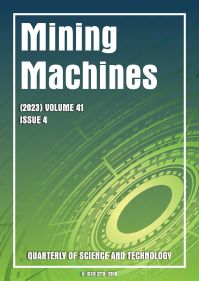Abstract
The general frequency of development of pitting corrosion was established, taking into account the results of the analysis of mine waters and foreign materials, which are favorable conditions for the formation of corrosion of steel degassing pipelines. A base of initial data was created for modeling the corrosion process of a steel degassing gas pipeline at different points in time: the beginning of the corrosion process, its development, and the end of the process. Stress distribution, corrosion potential, as well as anodic and cathodic current densities depending on the size of the corrosion crack and the longitudinal deformation of the rocks of the sole of the production was analysed. It has been proven that the high level of corrosion processes of underground pipelines is the result of the interaction of the metal, which acts as an electrode, with groundwater, which acts as an electrolyte, while the determining factors of the corrosion process are the electrical conductivity of the rocks of the bottom of the mine and the deformation processes in the pipelines. The reason of low service life of underground degassing pipelines, which are constantly exposed to mechanical and electrochemical corrosion, have been established.

This work is licensed under a Creative Commons Attribution-NonCommercial 4.0 International License.
Copyright (c) 2024 Rostyslav YEGORCHENKO, Andrii YAVORSKYI, Pavel DYACHKOV


